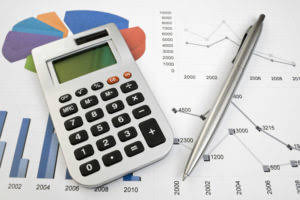16 Fév Cost Per Unit: Definition, Formula, & Examples

Cost per unit is the sum of all the expenses that a company incurs to produce, store and sell one unit of a product or a service. They are classified https://www.bookstime.com/ into two groups – fixed costs and variable costs. In order to calculate cost per unit, the first step is to ascertain operational profitability.
Cost control and efficiency
Dead stock can be costly for businesses, as they have to pay for the cost of storing it, as well as the cost of eventually disposing of it. Monitoring the cost per unit over time can help businesses evaluate their efficiency levels. This analysis is essential in identifying where cost savings can occur and monitoring the impact of efficiency improvements in business operations. It helps you inspect the areas where you can limit prices and decrease production costs for increased profit margins. WareIQ provides a one-stop shop for all your logistics needs, from managing inventory to shipping orders, solving COD, NDR, or fraud issues, and analysing performance. This enables eCommerce businesses to focus on growing their business and outsource all inventory management and shipping requirements while ultimately reducing shipping costs.
Breaking Down the Cost Per Unit Formula
Companies consider a variety of factors when determining the market offering price of a unit. Some companies may have a high amount of indirect costs which requires higher pricing to more broadly cover all of the company’s expenses. The unit cost, also known as the breakeven point, is the minimum price at which a company must sell the product to avoid losses. As an example, a product with a breakeven unit cost of $10 per unit must sell for above that price. Overhead costs such as rent, utilities, and salaries can all be reduced by implementing efficient business management processes and proactive cost-cutting measures. Value is what you get.” This quote holds true in the context of cost-per-unit analysis and reiterates the importance of a fine balance between production costs and market value.
Where to Learn More about Marginal Cost?
- Furthermore, precise calculations can assist in pinpointing opportunities for cost reduction.
- Electronic documents for electronic signature verification help avoid human mistakes resulting in reshipments and cancellations.
- Effective inventory management techniques such as proper demand forecasting, Just-In-Time (JIT) inventory management, and RFID technology can all help lower the cost per unit.
- Hence, ensure that the period for which you consider the total cost of production aligns with that of manufacturing to maintain consistency and accuracy in CPU analysis.
- You can also analyze your supplier’s cost breakdown to understand the components and find areas where you can reduce costs.
- So, you should always account for variations in the initial and final inventory levels over a given period to calculate accurate costs incurred in production and sales.
Put simply, it means that the average cost per unit goes down as units increase in number. Technology and automation can improve efficiency and minimize errors, reducing total production expenses and hence, the cost per unit. Examples of variable costs are raw material costs, production budget, packaging & shipping expenses, and variable overhead spends. Your team can also explore adopting lean inventory management practices and employing efficient warehouse layouts to cut storage costs. In that month, the company incurs fixed costs totaling $6,500, covering expenses such as rent, salaries, and insurance premiums.
- Greg’s Apothecary produces scented candles for an average of $10 per unit.
- For Greg and many other retail businesses, success is heavily reliant on having a profitable cost per unit — and half of that battle is keeping your costs low.
- It also helps you identify the point beyond which your business can start making profits.
- They are classified into two groups – fixed costs and variable costs.
- It is the amount of money spent in producing one unit of a product or service.
Formula for the Cost per Unit

It can help anticipate customer expectations and needs to adjust inventory levels based on that, preventing overstocking or stockouts. Integrating systems that track and auto-trigger alerts when inventory levels reach predefined how to calculate cost per unit thresholds can also help control overproduction and reduce storage costs. Buffers are supplies or products kept in place to deal with demand forecasting or supply chain fluctuations that can arise in the future.
Reduce dead stock, reshipments, and returns
A thought leader in the field, Rakesh’s insights are shaping the future of modern-day logistics, making him your go-to expert for all things route optimization. For instance, the cost of producing a smart TV will be higher than that of a shirt. Cost per unit (or CPU) is a crucial financial metric that provides valuable insights integral to assessing the financial health of your business.
Enter your email and we’ll send you this exclusive marginal cost formula calculator in Excel for yours to keep. You can add new rows in the Fixed Cost and Variable Cost table to insert new costs without changing the formula. Rakesh Patel, author of two defining books on reverse geotagging, is a trusted authority in routing and logistics. His innovative solutions at Upper Route Planner have simplified logistics for businesses across the board.
Here is how ShipBob can turn your logistics operations into a revenue driver. For example, working with a wholesale distributor will likely offer you better rates for inventory replenishment. Therefore, the cost to produce one unit of their very large dog food in February 2022 was $80.




No Comments